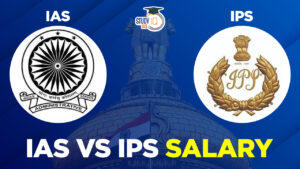Daily Current Affairs for UPSC 2023
Q) Which one of the following statements is not correct with respect to TeLEOS-2 satellite?
- It is an Earth observation satellite of Singapore.
- ISRO recently launched it into sun-synchronous orbit.
- A Polar Satellite Launch Vehicle was used in its launch.
- It has synthetic aperture radar for remote sensing applications.
Daily Current Affairs for UPSC – 18 April 2023
Explanation:
- Option (1) and (4) are correct but Option (2) is incorrect: Indian Space Research Organization (ISRO) will launch Singapore’s TeLEOS-2 satellite on board Polar Satellite Launch Vehicle (PSLV) on April 22, from the Satish Dhawan Space Centre in Sriharikota. TeLEOS-2 Satellite is a 750kg earth observation satellite that has synthetic aperture radar capable of providing data in 1-metre resolution. In 2015, ISRO launched TeLEOS-1, the first Singapore commercial Earth Observation Satellite, which was launched into a low Earth orbit for remote sensing applications. The ISRO has so far launched nine satellites belonging to Singapore.
- Option (3) is correct: TeLEOS-2 Satellite launch will be the 57th launch of PSLV which has proven to be one of ISRO’s most reliable vehicles, having launched hundreds of satellites and only three failures or partial failures since 1993. PSLV has also carried onboard India’s missions like Chandrayaan-1, Mangalyaan, and AstroSat.
Q) Consider the following statements about the Securities and Exchange Board of India (SEBI):
- It is a quasi-judicial body that can conduct inquiries and pass rulings on various matters related to the Indian capital market.
- Any person aggrieved by any order of the Securities Appellate Tribunal can appeal directly to the Supreme Court.
- SEBI has the power to regulate any investment pool of more than 100 crore rupees by an individual.
Which of the statements given above is/are correct?
- 1 and 2 only
- 1 and 3 only
- 2 and 3 only
- 1, 2 and 3
Explanation:
- Statement 1 is correct: The Securities and Exchange Board of India (SEBI) unveiled its new logo at a ceremony marking the regulatory body’s 35th foundation day. The Securities and Exchange Board of India was established as a statutory body in the year 1992. The provisions of the Securities and Exchange Board of India Act, 1992 came into force on January 30, 1992. In 1988, SEBI was constituted as the regulator of capital markets in India. Following the passage of the SEBI Act by Parliament in 1992, it was given autonomous and statutory powers. It is the regulator of the securities and commodity market in India owned by the Government of India. It is a quasi-legislative and quasi-judicial body which can draft regulations, conduct inquiries, pass rulings and impose penalties.
- Statement 2 is correct: SEBI Board consists of a Chairman and several other whole time and part time members. Securities Appellate Tribunal is a statutory body established under the Securities and Exchange Board of India Act, 1992. Its main function is to hear and dispose of appeals against orders passed by the Securities and Exchange Board of India. The Tribunal has the same powers as are vested in a civil court. Person aggrieved by any order or decision of Securities Appellate Tribunal can file an appeal to the Supreme Court.
- Statement 3 is correct: SEBI also aims to check fraudulence by harmonising its statutory regulations and self-regulating business. It also enables a competitive professional market for intermediaries. SEBI provides a marketplace in which the issuers can increase finance properly. It also ensures safety and supply of precise and accurate information from the investors. SEBI analyses the trading of stocks and saves the security market from the malpractices. It controls the stockbrokers and sub- stockbrokers. It provides education regarding the market to the investors to enhance their knowledge. SEBI has powers to regulate any pooling of funds for investments aggregating Rs 100 crore or more by an individual or a company. Chairman SEBI has powers to authorize the carrying out of search and seizure operations.
Q) With reference to National Investigation Agency (NIA), consider the following statements:
- It is a central agency to investigate offences committed against atomic and nuclear facilities.
- The officers of the NIA can investigate only those scheduled offences which are committed within the territory of India.
- The NIA can also investigate offences related to cyber-terrorism and counterfeit currency.
Which of the statements given above is/are correct?
- 1 and 2 only
- 1 and 3 only
- 2 and 3 only
- 1, 2 and 3
Explanation:
- Statement 1 is correct: National Investigation Agency (NIA) is the Central Counter-Terrorism Law Enforcement Agency of India. It was constituted under the National Investigation Agency (NIA) Act, 2008, aftermath of the 26/11 Mumbai terror attack. It functions under the aegis of the Ministry of Home Affairs. The agency is empowered to deal with the investigation of terror-related crimes across states under written proclamation from the Ministry of Home Affairs without special permission from the states. It is a central agency to investigate and prosecutes offences:
- Affecting the sovereignty, security, and integrity of India, security of State, and friendly relations with foreign States.
- Against atomic and nuclear facilities.
- Smuggling in High-Quality Counterfeit Indian Currency.
- Statement 2 is incorrect but statement 3 is correct: The NIA (Amendment) Act, 2019 seeks to allow the NIA to investigate the following additional offences related to Human trafficking, Offences related to counterfeit currency or banknotes, Manufacture or sale of prohibited arms, Cyber-terrorism, and Offences under the Explosive Substances Act, 1908 The amendment also expands the jurisdiction of NIA:
- The officers of the NIA have the same powers as other police officers in relation to the investigation of such offences, across India.
- The officers of the NIA will have the power to investigate scheduled offences committed outside India, subject to international treaties and domestic laws of other countries.
- The central government may direct the NIA to investigate such cases if the offense has been committed in India. The Special Court in New Delhi will have jurisdiction over these
Q) Consider the following pairs:
| Constitutional Provision | Associated state | |
| 1. | Article 371B | Nagaland |
| 2. | Article 371D | Andhra Pradesh |
| 3. | Article 371F | Mizoram |
| 4. | Article 371G | Karnataka |
How many of the pairs given above is/are correctly matched?
- Only one pair
- Only two pairs
- Only three pairs
- All four pairs
Explanation:
- Pair 1 is incorrectly matched: As per Article 371B added by 22nd Amendment Act, 1969, the President may provide for the constitution and functions of a committee of the Assam Assembly consisting of members elected from the state’s tribal areas.
- Pair 2 is correctly matched: Article 371D added by 32nd Amendment Act, 1973; substituted by The Andhra Pradesh Reorganisation Act, 2014), In the state of Andhra Pradesh and Telangana the President must ensure “equitable opportunities and facilities” in “public employment and education to people from different parts of the state”. He may require the state government to organise “any class or classes of posts in a civil service of, or any class or classes of civil posts under, the State into different local cadres for different parts of the State”. He has similar powers vis-à-vis admissions in educational institutions.
- Pair 3 is incorrectly matched: As per Article 371F added by 36th Amendment Act, 1975 members of the Legislative Assembly of Sikkim shall elect the representative of Sikkim in the House of the People. To protect the rights and interests of various sections of the population of Sikkim, Parliament may provide for the number seats in the Assembly, which may be filled only by candidates from those sections.
- Pair 4 is incorrectly matched: As per Article 371G added by 53rd Amendment Act, 1986, in case of the state of Mizoram, Parliament cannot make laws on “religious or social practices of the Mizos, Mizo customary law and procedure, administration of civil and criminal justice involving decisions according to Mizo customary law, ownership and transfer of land… unless the Assembly… so decides”.
Q) Consider the following statements about Jagadish Chandra Bose:
- He invented the crescograph to measure the growth of plants.
- He discovered wireless communication and is considered the father of Bengali science fiction.
Which of the statements given above is/are correct?
- 1 only
- 2 only
- Both 1 and 2
- Neither 1 nor 2
Explanation:
- Statement 1 is correct: Recently, Researchers have picked up ‘distress’ calls from plants in difficulty, such as when they need water, more than a century ago, a pioneering Indian scientist had demonstrated that plants can ‘feel’ pleasure and pain. Acharya Jagadish Chandra Bose was a biologist, physicist, botanist and an early writer of science fiction. He was a Plant Physiologist and physicist who invented the crescograph, a device for measuring the growth of plants. He for the first time demonstrated that plants have feelings and were able to feel pleasure and pain just like animals.
- Statement 2 is correct: Bose discovered wireless communication and was named the Father of Radio Science by the Institute of Electrical and Electronics Engineering. He was responsible for the expansion of experimental science in India. Bose is considered the father of Bengali science fiction. A crater on the moon has been named in his honour. He founded Bose Institute, a premier research institute of India and also one of its oldest. To facilitate his research, he constructed automatic recorders capable of registering extremely slight movements; these instruments produced some striking results, such as quivering of injured plants, which Bose interpreted as a power of feeling in plants. His books include Response in the Living and Non-Living (1902) and The Nervous Mechanism of Plants (1926).


 IAS vs IPS Salary, Structure and Compari...
IAS vs IPS Salary, Structure and Compari...
 National Clean Air Programme, Key Featur...
National Clean Air Programme, Key Featur...
 Current Affairs 25th April 2024 for UPSC...
Current Affairs 25th April 2024 for UPSC...

















